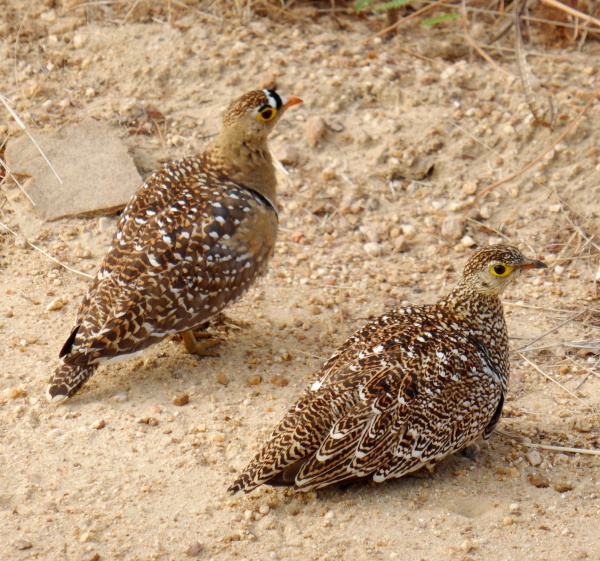Facts About Double-banded sandgrouse
The double-banded sandgrouse is a captivating ground-dwelling bird indigenous to the arid regions of southern Africa. There are three subspecies, each with its own distinct range. This medium-sized bird features light brown feathers, with males distinguished by a striking black and white band on their forehead and a chestnut-colored throat.
These birds favor habitats with short, trampled grass, gravel patches, and scrubby woodlands. Their diet primarily comprises seeds, which they forage for diligently.
The breeding season for the double-banded sandgrouse extends from February to September. During this period, males perform elaborate courtship displays to attract females. Their nests are simple, shallow depressions in the soil, usually concealed under vegetation to provide some cover. Both parents share the responsibility of incubating the eggs, which typically hatch after about 24 days. The chicks are relatively independent from birth, capable of flying within a month.
You will often find these birds in small groups, as they are monogamous and exhibit a strong sense of family. Their feeding habits vary throughout the day: they search for food away from water sources in the morning but prefer to stay closer to watering holes in the afternoon and after dark.
Interestingly, observations at the Borakalalo Game Reserve indicate that these birds are present during the dry months but tend to disappear when the wet season arrives.

 Botswana
Botswana